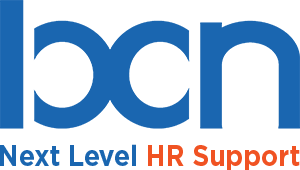As employers prepare to get back to work and bring laid off or furloughed employees back to the workplace, it is safe to say that there will be a ”new normal” for managers and employees functioning in this time of the coronavirus pandemic. Governors are beginning to lift stay-at-home orders and allow certain businesses to function once again.
Here are a few things to seriously consider as you make your plans:
Calling employees back to work: Be informed on regulations
Are you up-to-date on state and county ordinances in addition to the White House guidelines and updated OSHA work safety regulations? Many counties have specific, local guidelines that must be posted at all business entrances advising employees and visitors of actions necessary before entering. Whether you are open to the public, or simply allowing employees back into your private workplace, be sure that you – and your workers – understand all protocols.
You may be bringing employees back in stages. If you did not yet advise employees about the order of recall, you can bring back employees based upon the best interests of the company, including such things as job function, performance and knowledge of operations.
What if employees are not ready to return?
As happened with some essential workers, employers may find some employees unwilling to return to work. Employees who refuse to return to work out of generalized fear may be deemed to have resigned. Before parting ways with any employee, conduct an interactive process to ensure they are not protected under the newly enacted Families First Coronavirus Response Act or other regulatory employment laws.
Avoid discrimination claims when recalling employees
Although an action may be well intentioned, don’t make the mistake of deciding who is and isn’t offered a return to work based on perceived at-risk factors. Older employees, pregnant women and individuals with underlying health problems should be offered an equal opportunity to return to work. But be aware that employees may be ineligible for unemployment benefits if they are offered work and turn it down.
Following health and safety protocols in the workplace
As mentioned above, be aware of any state and local orders and health department directives for your area. New practices for providing personal protective equipment, health screening, social distancing and increased hygiene efforts are recommended and may be required. Currently, employers may (and should) regularly ask employees if they are experiencing COVID-19 symptoms and may take their temperatures. But treat all information as a confidential medical record in compliance with the Americans with Disabilities Act.
Teleworkers may also be reluctant to return to the office
An employer may have allowed employees to work remotely during initial stages of the health pandemic. But this does not mean employees could perform all essential job functions at home or that employers must allow employees to continue working from home. Companies that continue to allow remote work should craft a policy outlining expectations including availability and accountability of employees to work attire and video conferencing.
Be prepared for new challenges
Employers must enforce new work rules such as social distancing and use of face masks or other protective equipment. Some employees may not feel the need and may be uncomfortable with such restrictions. Managers must be willing to discipline employees who do not adhere to established health and safety protocols for the protection of employees, customers and the company.
Some employees may be fearful of employees who have contracted the virus, recovered and returned to work. With proper safety measures in place, managers should be able to address employee fears.
Welcome your employees back to work
Consider a “welcome back to work” letter that outlines your expectations. Be sure to include actions the company has taken to ensure employee safety. Set an upbeat tone and emphasize respect for all co-workers.
BCN Services is helping employers and employees adapt to the new normal by assisting with safety concerns, providing new regulatory policies and posters, and advising managers on new employee relations and employment practices. Contact us at 1-800-891-9911 for a consultation.

